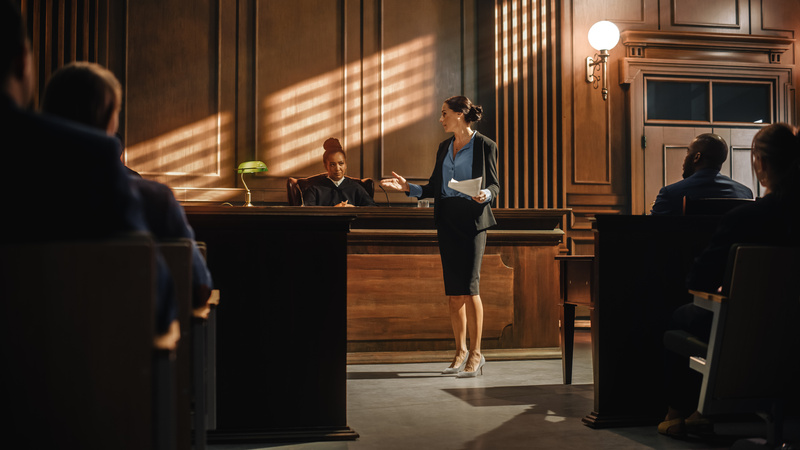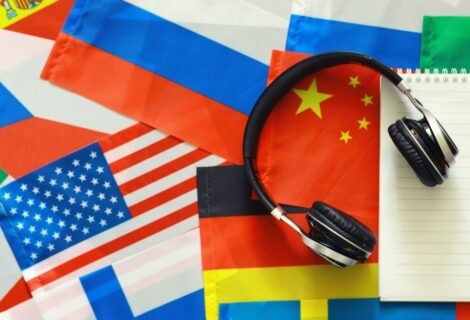Two-Way Communication System Improves Attorney-Client Communication
“As long as we are enforcing mask wearing and social distancing,
these two-way communications systems are going to be essential.”
Norm Dawson, Supervising Public Defender, Sacramento County – Public Defender’s Office
COVID-19 has been a game-changer for everyone, with far-reaching effects on how we learn, how we socialize and particularly, how we work.
The new normal — wearing masks and social distancing — has allowed many of us to stay on the job. But the very measures that are keeping us safe and slowing the spread of the disease may also be making it more difficult for us to perform our duties.
Pandemic Restricts Attorney-Client Communication
Take, for example, the Sacramento County Office of the Public Defender, each year represents thousands of individuals who cannot afford to hire a private attorney. When California imposed a statewide lockdown in March 2020, its courts began restricting jail visits and imposing strict social distancing requirements in courtroom proceedings such as arraignments, preliminary hearings and trials.
This had serious repercussions for the Public Defender’s Office, says Norm Dawson, a Supervising Public Defender that has represented many high profile clients, and was most recently involved in the representation of Joseph DeAngelo, also known as “The Golden State Killer.” “Typically we meet in-person with our clients at the jail, sit right next to them to talk about their case and whisper in their ears during preliminary hearings and trials. But once COVID restrictions were implemented, we suddenly had to figure out a whole new way to communicate with our clients.”
Dawson knew the court’s language interpreters were using a wireless two-way communication system from Tripp Communications Systems to provide interpretive services to clients with limited English proficiency. Could public defenders use that same system, he wondered, to communicate with their clients and simultaneously comply with social distancing mandates?
Two-Way Communication Requirements
To discuss the possibilities, Dawson contacted Tripp Communications, which immediately shipped him a demo version of the system and then held a training session via teleconference for himself and several other attorneys in his office.
 When the attorneys set out to test-drive the system under real-world conditions, they had two major concerns. First, would they be able to carry on secure, confidential conversations with their clients at distances of six feet or more, without being overheard? Second, could they manage to stay focused on what was going on in the courtroom, without the system itself becoming a distraction?
When the attorneys set out to test-drive the system under real-world conditions, they had two major concerns. First, would they be able to carry on secure, confidential conversations with their clients at distances of six feet or more, without being overheard? Second, could they manage to stay focused on what was going on in the courtroom, without the system itself becoming a distraction?
The answer to both questions was a resounding yes. The communications system’s advanced technology addresses all of the attorneys’ security concerns: built-in encryption prevents anyone from eavesdropping on confidential discussions and crosstalk is impossible too, since each conversation operates on a unique radio frequency. Additionally, its sound capability is so sensitive that either party can speak in a whisper and still be heard from across the courtroom.
Concerns that the system would prove to be distracting in open court also were unfounded. Attorneys report that using it to communicate soon becomes second nature, and it’s so simple to operate that clients learn how it works in just a few minutes.
Easy to Use Two-Way Communication System
The wireless system Dawson purchased consists of 24 lightweight transceivers on breakaway lanyards that attorneys and clients wear around their necks, and inexpensive headsets with attached boom mics. To protect against the coronavirus, staff members sanitize the transceivers after each courtroom session and headsets are used once and discarded. On any given day, public defenders can use the transceivers to hold up to 12 socially distanced court appearances.
Attorneys either set their transceivers to “always on” or can initiate a conversation with their client at the touch of a button. Clients typically must press a “talk” button to speak with their attorney but their transceiver can be set up to communicate hands-free, as well. Attorneys can also choose to mute a client’s talkback capability, altogether.
Another useful feature of the wireless communications system allows a third party to easily join in on a discussion between an attorney and client. According to Dawson, this capability works flawlessly — a language interpreter or subject expert, for example, simply touches the back of their transceiver to the back of the attorney’s transceiver and instantly becomes part of the conversation.
Public defenders are finding the system particularly useful in preliminary hearings, where judges determine if enough evidence exists to hold over a defendant for trial. “There’s a certain urgency to this type of hearing, so attorneys need to maintain a sharp focus on courtroom proceedings and also be able to talk back and forth freely with their clients,” says Dawson. “The new communications system lets them do just that.”
With the pandemic still raging, Dawson has no idea how long he and his fellow public defenders will need to keep using the two-way wireless communications system. “Without the capabilities it provides,” he says, “we couldn’t be holding court appearances at all.”




